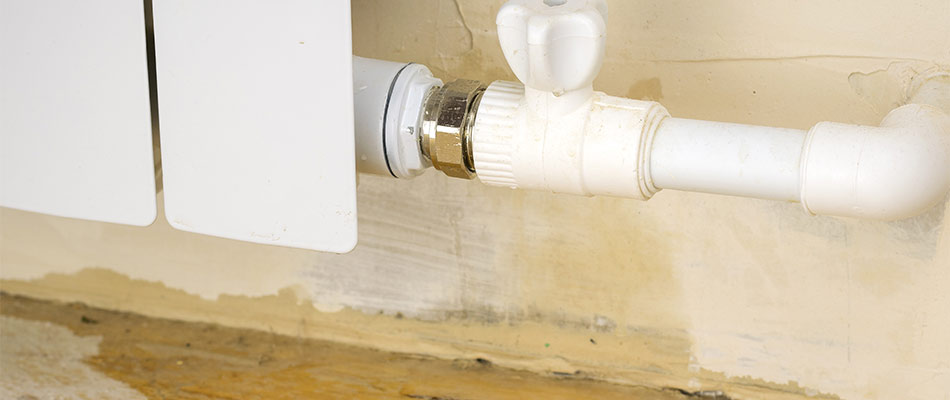Just how to Inspect If Your House Has a Hidden Leakage
Just how to Inspect If Your House Has a Hidden Leakage
Blog Article
The article which follows on the subject of Top leak detection hacks is particularly remarkable. Check it out yourself and see what you think of it.

Early detection of dripping water lines can reduce a prospective catastrophe. Some small water leakages may not be visible.
1. Analyze the Water Meter
Every house has a water meter. Examining it is a guaranteed manner in which helps you uncover leaks. For beginners, turn off all the water sources. Guarantee no person will certainly purge, use the tap, shower, run the cleaning equipment or dishwasher. From there, go to the meter and watch if it will transform. Since nobody is using it, there should be no motions. If it moves, that shows a fast-moving leakage. If you detect no changes, wait an hour or two and also check back once more. This suggests you may have a sluggish leakage that could also be below ground.
2. Check Water Consumption
Evaluate your water expenses and track your water usage. As the one paying it, you should observe if there are any type of inconsistencies. If you find sudden changes, regardless of your intake being the same, it indicates that you have leakages in your plumbing system. Bear in mind, your water bill must drop under the very same variety every month. An unexpected spike in your costs shows a fast-moving leak.
Meanwhile, a consistent increase every month, despite the very same behaviors, reveals you have a slow-moving leak that's additionally gradually intensifying. Call a plumber to thoroughly examine your residential property, particularly if you really feel a warm area on your flooring with piping below.
3. Do a Food Coloring Test
When it comes to water usage, 30% comes from commodes. If the shade somehow infiltrates your dish throughout that time without flushing, there's a leakage between the storage tank and bowl.
4. Asses Outside Lines
Don't forget to examine your outside water lines also. Must water leak out of the connection, you have a loosened rubber gasket. One little leak can lose bunches of water and also increase your water costs.
5. Analyze the situation as well as check
House owners must make it a behavior to inspect under the sink counters and also even inside closets for any type of bad odor or mold growth. These two red flags suggest a leakage so timely attention is called for. Doing regular assessments, also bi-annually, can conserve you from a major problem.
Check for discolorations and compromising as most home appliances as well as pipelines have a life expectancy. If you believe leaking water lines in your plumbing system, don't wait for it to rise.
Early discovery of dripping water lines can mitigate a possible catastrophe. Some small water leaks might not be noticeable. Inspecting it is a surefire method that assists you uncover leaks. One small leak can waste heaps of water as well as spike your water bill.
If you presume dripping water lines in your plumbing system, don't wait for it to escalate.
WARNING SIGNS OF WATER LEAKAGE BEHIND THE WALL
PERSISTENT MUSTY ODORS
As water slowly drips from a leaky pipe inside the wall, flooring and sheetrock stay damp and develop an odor similar to wet cardboard. It generates a musty smell that can help you find hidden leaks.
MOLD IN UNUSUAL AREAS
Mold usually grows in wet areas like kitchens, baths and laundry rooms. If you spot the stuff on walls or baseboards in other rooms of the house, it’s a good indicator of undetected water leaks.
STAINS THAT GROW
When mold thrives around a leaky pipe, it sometimes takes hold on the inside surface of the affected wall. A growing stain on otherwise clean sheetrock is often your sign of a hidden plumbing problem.
PEELING OR BUBBLING WALLPAPER / PAINT
This clue is easy to miss in rooms that don’t get much use. When you see wallpaper separating along seams or paint bubbling or flaking off the wall, blame sheetrock that stays wet because of an undetected leak.
BUCKLED CEILINGS AND STAINED FLOORS
If ceilings or floors in bathrooms, kitchens or laundry areas develop structural problems, don’t rule out constant damp inside the walls. Wet sheetrock can affect adjacent framing, flooring and ceilings.
https://www.servicemasterbyzaba.com/blog/how-to-detect-water-leakage-in-walls/

We hope you liked our post on Leaking water lines. Thank you so much for finding the time to browse our posting. Enjoyed our piece of writing? Please share it. Let someone else find it. Many thanks for your time spent reading it.
Report this page